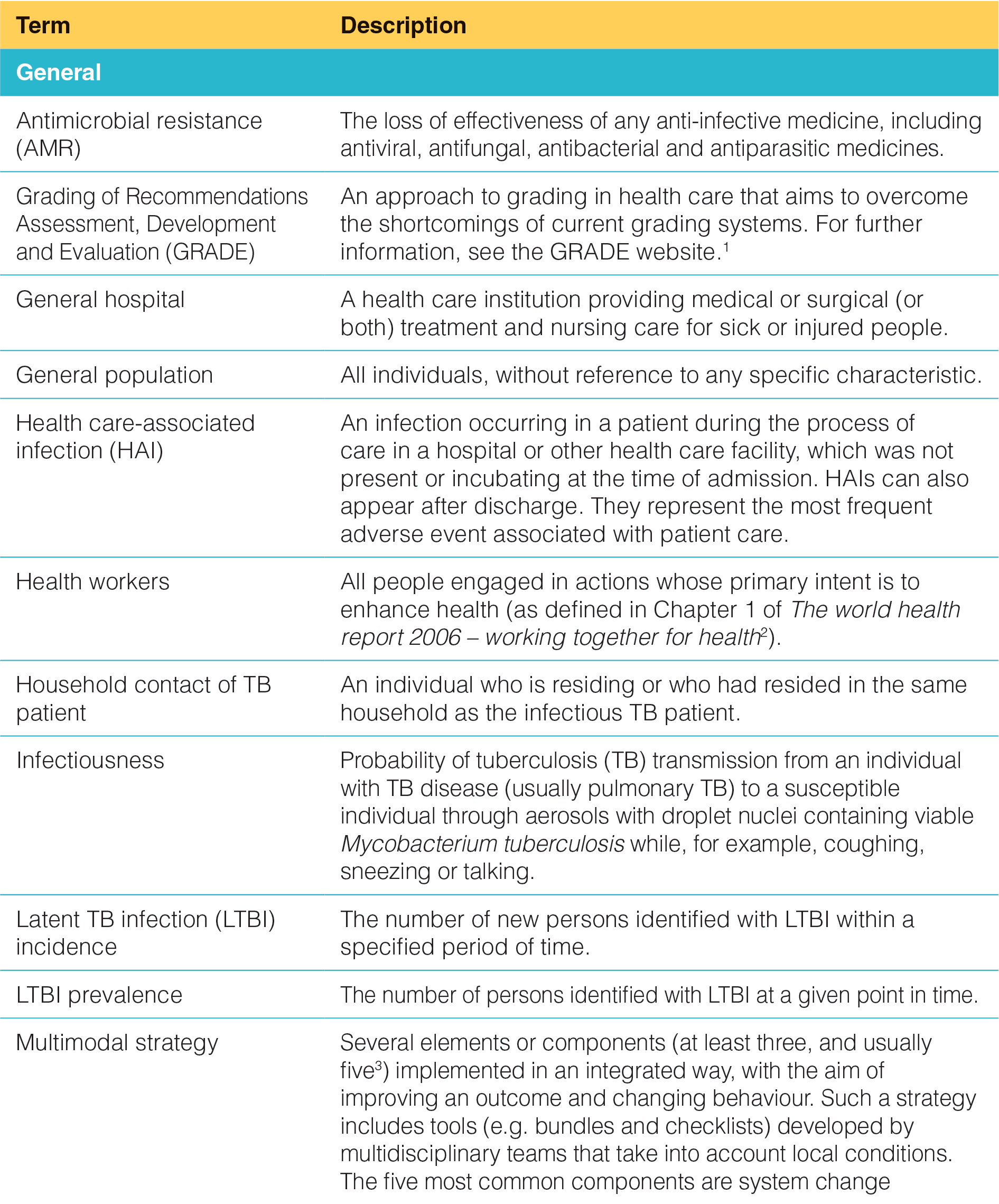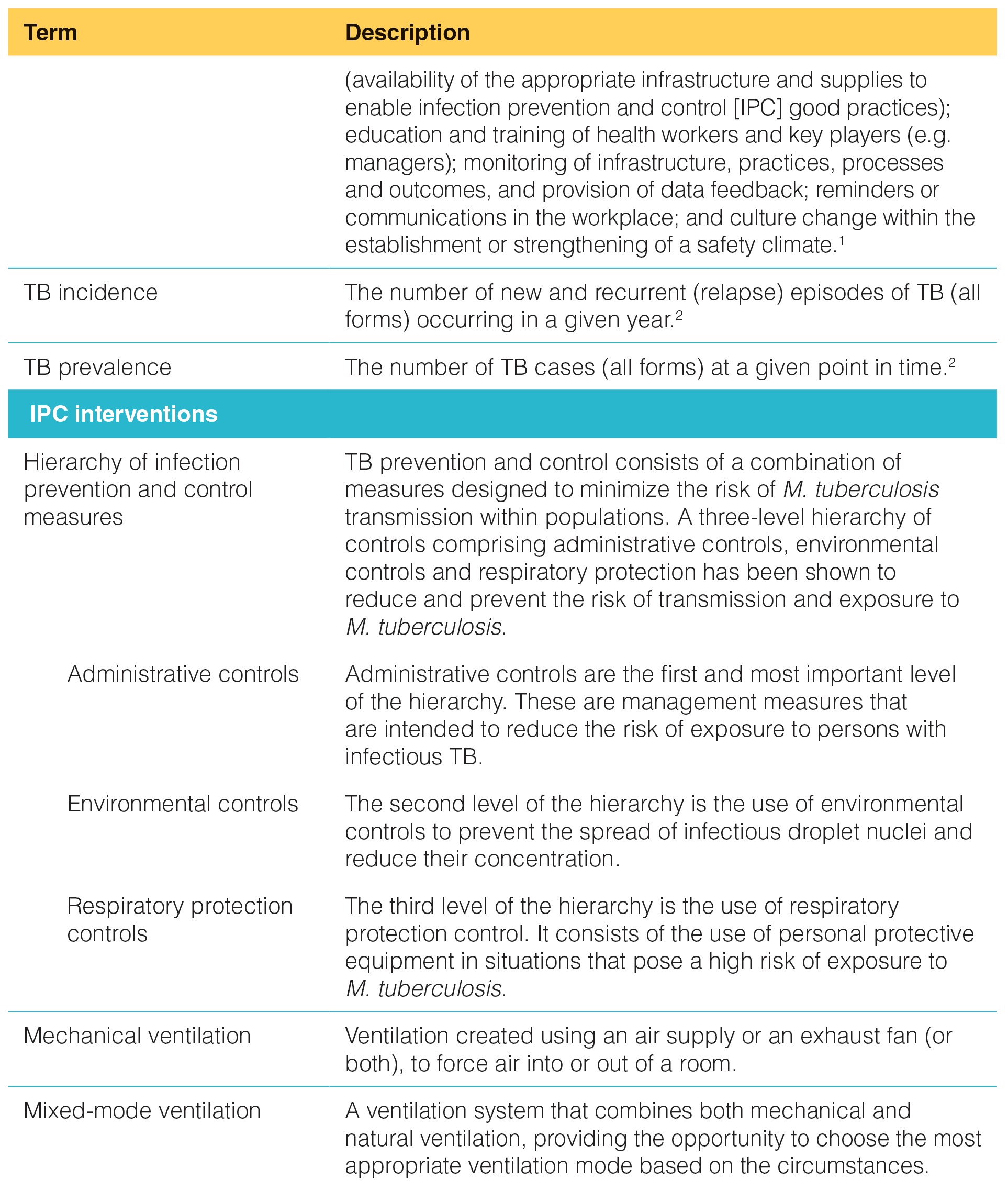How to use these guidelines
These guidelines have been developed to provide updated, evidence-informed recommendations on tuberculosis (TB) infection prevention and control (IPC) in the context of the global targets of the Sustainable Development Goals (SDGs) and the World Health Organization (WHO) End TB Strategy.
 Feedback
Feedback
